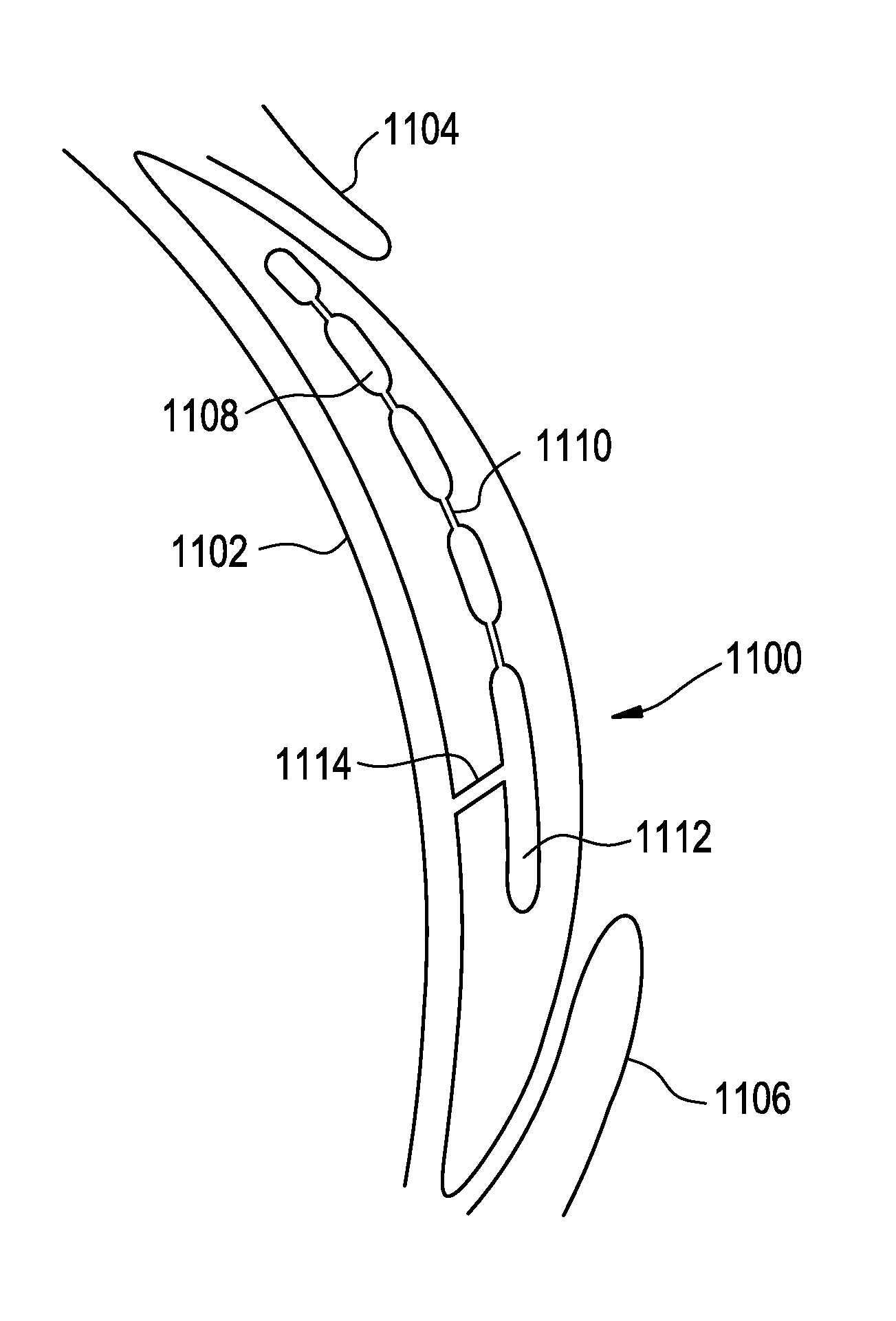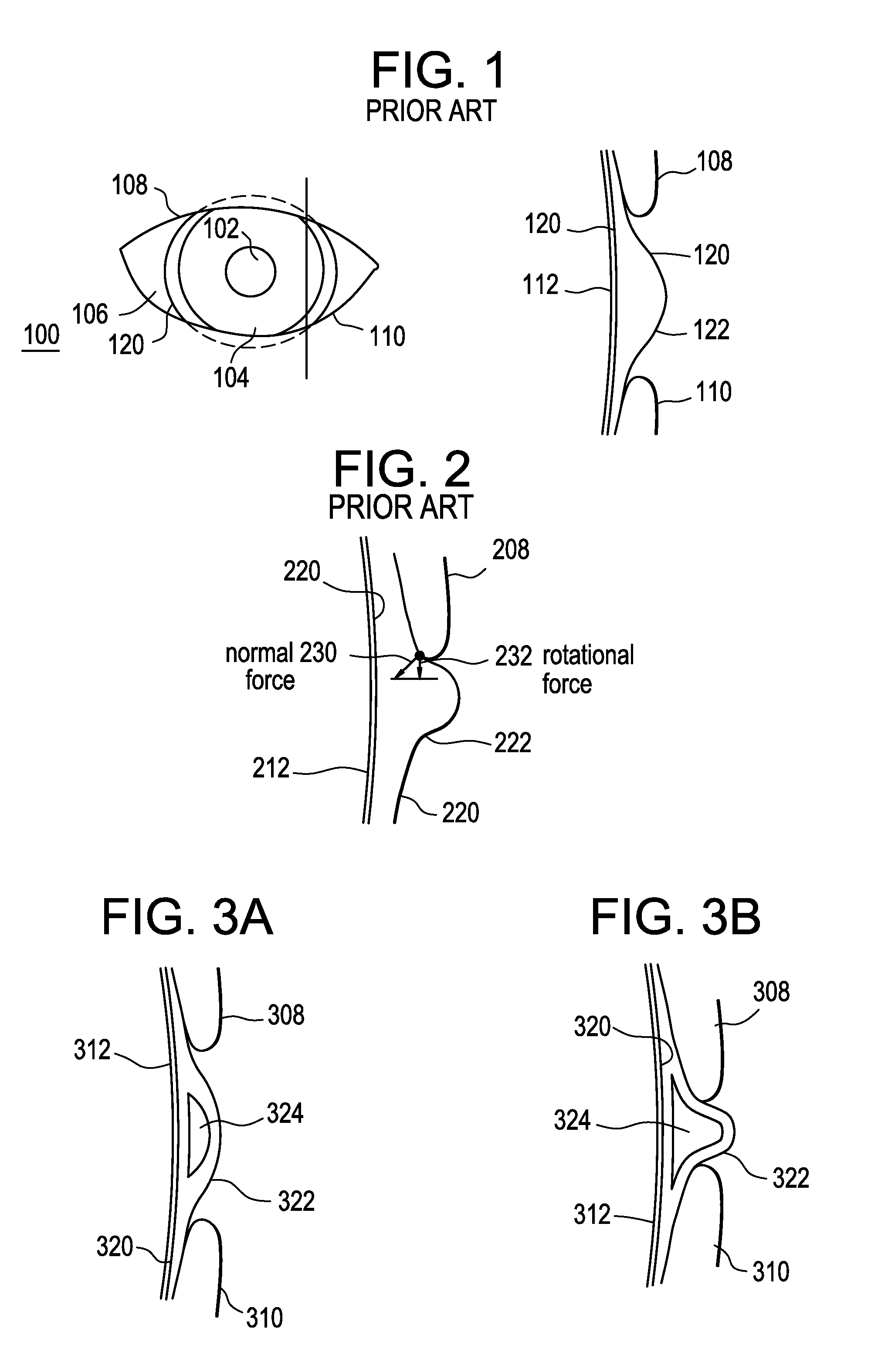Dynamic fluid zones in contact lenses
a technology of contact lenses and fluid zones, applied in the field of contact lens fluid/gel zones, can solve the problems of individual vision blurring, optical or refractive defects, and general hyperopia, and achieve the effects of simple design and manufacture, increased manufacturing cost, and low manufacturing cos
- Summary
- Abstract
- Description
- Claims
- Application Information
AI Technical Summary
Benefits of technology
Problems solved by technology
Method used
Image
Examples
Embodiment Construction
[0042]Currently, contact lenses requiring rotational stabilization in order to maintain optimal visual acuity, for example, toric contact lenses, rely on either weight or eyelid pressure to maintain the contact lens oriented on the eye. Referring to FIG. 1, there is illustrated in both plan and cross-sectional view an eyelid pressure stabilized design wherein the contact lens 120 is thicker in a stabilization zone or region 122. The contact lens 120 is positioned on the eye 100 such that it covers the pupil 102, the iris 104 and a portion of the sclera 106 and sits under both the upper and lower eyelids 108 and 110 respectively. The thicker stabilization zone 122 in this design is positioned over the cornea 112. Once stabilized, the stabilization zone 122 is maintained between the upper and lower eyelids 108 and 110.
[0043]FIG. 2 illustrates in greater detail how the thicker stabilization zone 222 interacts with the upper eyelid 208 to induce a force that tends to rotate the contact ...
PUM
 Login to View More
Login to View More Abstract
Description
Claims
Application Information
 Login to View More
Login to View More - R&D
- Intellectual Property
- Life Sciences
- Materials
- Tech Scout
- Unparalleled Data Quality
- Higher Quality Content
- 60% Fewer Hallucinations
Browse by: Latest US Patents, China's latest patents, Technical Efficacy Thesaurus, Application Domain, Technology Topic, Popular Technical Reports.
© 2025 PatSnap. All rights reserved.Legal|Privacy policy|Modern Slavery Act Transparency Statement|Sitemap|About US| Contact US: help@patsnap.com



